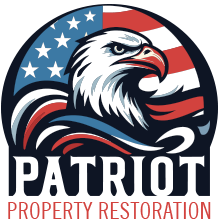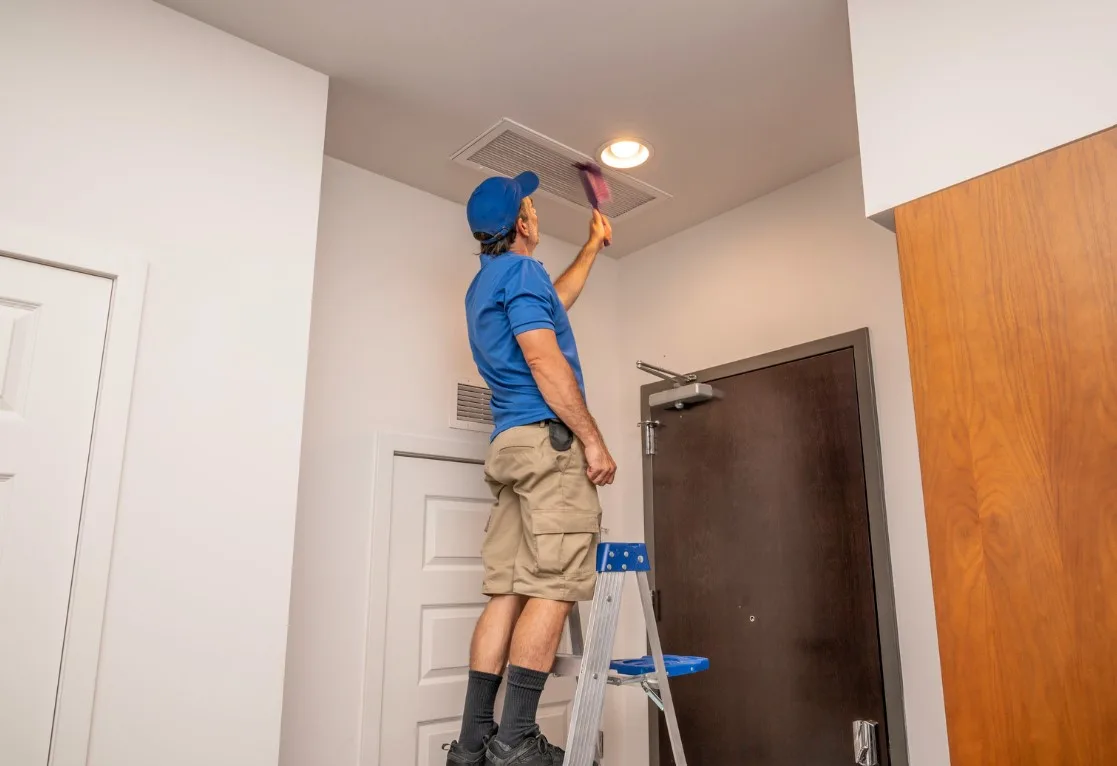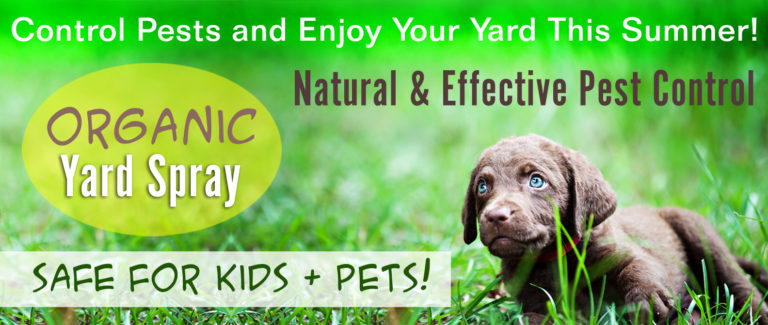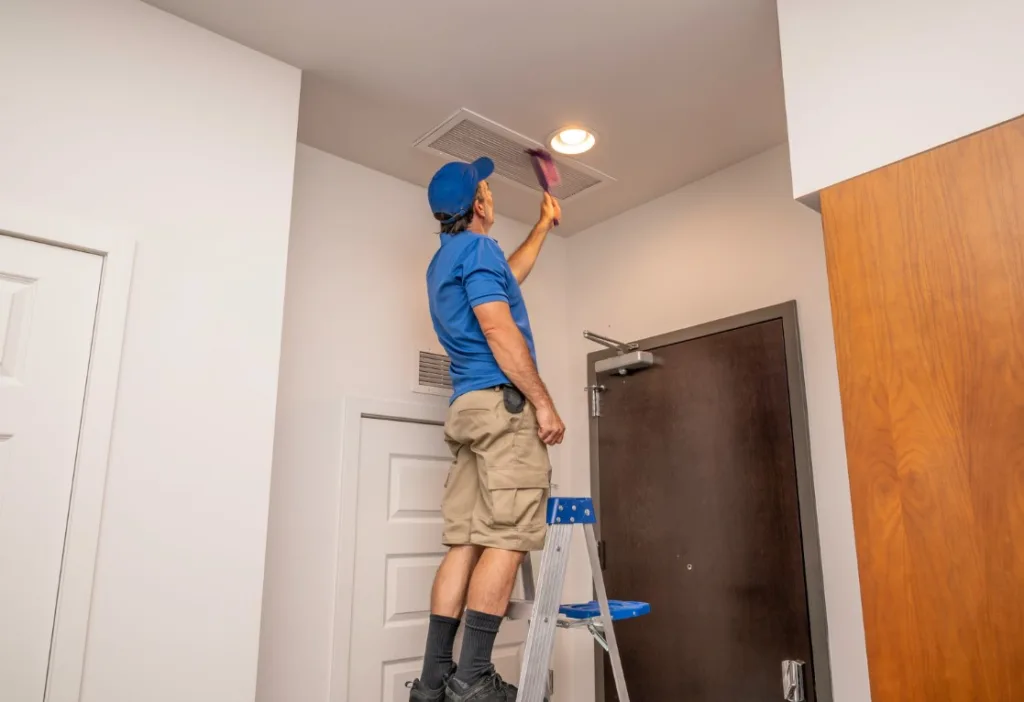
Mold spores are microscopic organisms that love to thrive in damp, dark places. Unfortunately, the HVAC system, including the air conditioner, air ducts, and air vents, can provide the perfect environment for these spores to grow and multiply.
Your air conditioning unit, or AC unit, does an excellent job of cooling your home during those hot summer months in your Monmouth County or Ocean County, New Jersey home. However, it also generates condensation – a key ingredient for mold growth. Parts of the system like the drain pan, designed to collect this excess moisture, could potentially become a breeding ground for mold if not properly maintained.
Let’s review the intricacies of HVAC systems, explore the signs of mold growth, and most importantly, share tips on how to prevent mold from turning your system into its home. If you’ve spotted some suspicious discoloration around your air vents or just want to ensure you’re doing everything you can to maintain a healthy, mold-free environment, Patriot Property Restoration is here to help.
Understanding Mold and Its Dangers
Mold, a type of fungus, is a living organism that grows in damp, dark environments. It reproduces by releasing spores into the air, which can spread throughout your home, infesting areas like your HVAC system, including air conditioning units and air filters.
Molds are part of the natural environment. Outdoors, molds play a part in nature by breaking down dead organic matter such as fallen leaves and dead trees, but indoors, mold growth should be avoided. Molds reproduce by means of tiny spores; the spores are invisible to the naked eye and float through outdoor and indoor air.
Mold is a type of fungus that can grow almost anywhere there is moisture and organic material. It thrives in warm air and damp conditions, making your HVAC system an ideal breeding ground. When mold grows in your air conditioning unit or air filters, it can release spores into the air which can then be distributed throughout your home.
Mold may begin growing indoors when mold spores land on surfaces that are wet. There are many types of mold, and none of them will grow without water or moisture. Click here https://www.epa.gov/mold to learn more about mold prevention in your home from the EPA.
Health Risks Associated with Mold Exposure
Exposure to mold in your air can lead to a variety of health problems, particularly for those with existing respiratory conditions or allergies. Symptoms can range from mild irritations, such as coughing, wheezing, and skin rashes, to more severe reactions including fever and shortness of breath. Long-term exposure can even lead to more serious conditions, such as mold-induced asthma or lung infections.
How Mold Can Damage Your HVAC System and Home
While the health risks are certainly concerning, mold can also cause significant damage to your home and HVAC system. Mold growth in your air conditioning units can hinder their performance, leading to reduced efficiency and increased energy costs. In severe cases, the mold can cause such extensive damage that the unit needs to be replaced.
When humid air passes over chilled cooling coils, water condenses and drips through the coils into a collection pan, from which it continuously drains. Problems with these systems may occur when this water collects and becomes stagnant when it becomes blocked, either on the coils or in the drip pan.

The pan will grow mold that can infect your home with dangerous mold spores very quickly. Problems also exist when the HVAC ducting contains microscopic mold spores that stay continually present and blow contaminants around the home or office often caused by mold in other parts of your home.
Visible mold on walls, ceilings, or other surfaces in your home is a clear sign of a problem. However, mold often grows in hidden places like inside air vents or ducts. This hidden mold can eat away at the structure of your home, causing costly damage over time.
Mold Remediation and Prevention
If you have mold in your HVAC system, prompt mold removal is crucial. Mold remediation is more than just cleaning up the visible mold. It involves identifying and addressing the source of the moisture that is allowing the mold to grow. This may include fixing leaks, improving ventilation, or installing a sump pump & drainage systems.
A key part of mold remediation is also preventing future growth. This can be achieved by regularly checking and changing your air filters, ensuring your air conditioning units are properly maintained, and keeping humidity levels in your home under control.
Patriot Property Restoration, based in Ocean County, New Jersey, offers comprehensive mold remediation services. We are experienced at handling mold removal and, unlike many of our local competitors, are specifically licensed and insured to perform this service in New Jersey. We also offer additional services like crawl space and attic evaluations, wood repair, moisture solutions, and crawl space encapsulation. Our experts can help you reclaim your home from mold, ensuring it’s safe, healthy, and comfortable for you and your family.
Signs of Mold Growth in Your HVAC System
Early detection of mold in your HVAC system is crucial for effective mold remediation. Recognizing the signs of mold growth can help you take prompt action, potentially saving you from more significant health risks and costly repairs down the line.
Is there a smell coming from your AC/Furnace area? Is it almost like someone left a fridge open and the food is going bad? Have you tried changing the filter? Start with that and make sure there is no evidence of moisture around the area.
If the odor persists you can have us come out to do a diagnosis. Start with a professional mold test. Air sampling is not enough to distinguish if you have a mold infestation since mold spores can be detected everywhere in the air, both inside and out. We take physical samples and get results from a reputable third party lab within 24 hours.
Common Signs That Indicate the Presence of Mold in Your HVAC
The presence of mold in your HVAC system may not always be visible, but it can manifest in several other noticeable ways. Here are some common signs:
- Unusual Odor: A musty or damp smell is a common indicator of mold growth. If you notice such an odor coming from your air vents when the air conditioning unit is running, it could be a sign that there’s mold in your HVAC system.
- Allergic Reactions: If you or your family members start experiencing inexplicable allergies, such as sneezing, a runny nose, red eyes, or skin rash, it could be due to mold spores circulating in the air.
- Visible Mold Growth: While mold inside your HVAC system might be hard to spot, visible mold around air vents, ducts, or other parts of your system is a clear indicator of a problem.
- Decreased HVAC Efficiency: If your HVAC system isn’t cooling or heating your home as efficiently as it used to, it could be a sign that mold growth is obstructing air flow.
Preventing Mold Growth in HVAC Systems
Prevention is always better than cure, especially when it comes to mold growth in your HVAC system. By implementing routine maintenance and checks, ensuring proper ventilation and dehumidification, and using mold-resistant products, you can significantly reduce the risk of mold infestation.
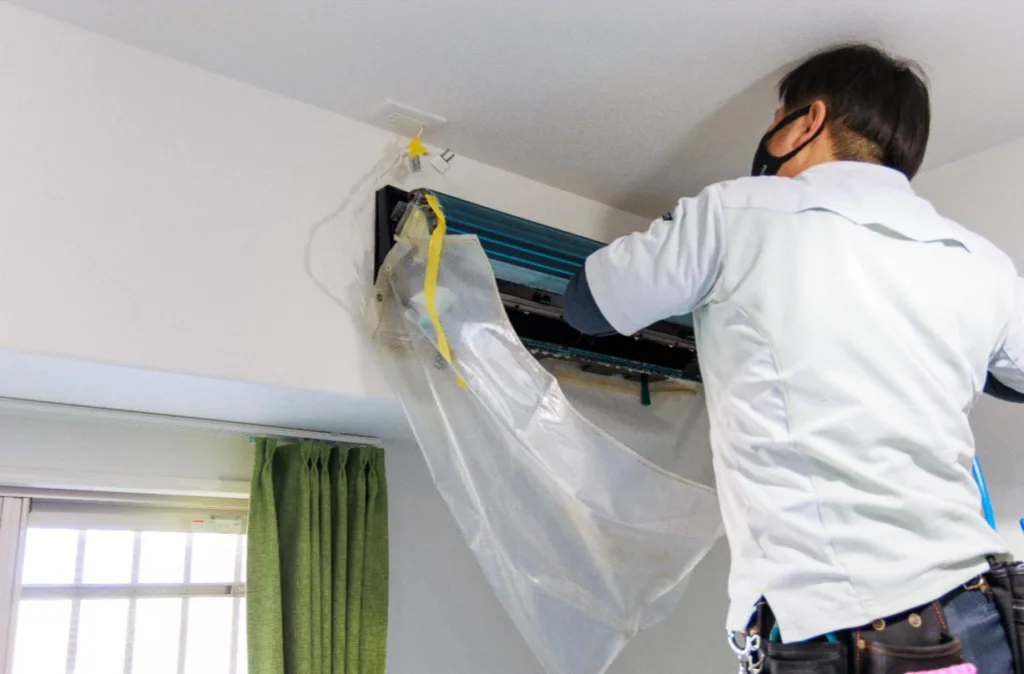
Routine Maintenance and Checks
Regular maintenance of your HVAC system plays a crucial role in preventing mold growth. This includes changing air filters every 30-90 days, depending on the type of filter and usage. A clogged air filter can lead to moisture build-up, providing an ideal environment for mold growth.
Preventative maintenance will ensure that the collection pan under the indoor coil stays clean and clog free. Your HVAC’s drain pan and line should also be checked regularly for any blockages. If left alone, stagnant water can accumulate, creating a perfect breeding ground for mold.
It’s also important to routinely inspect your air ducts, cooling coils, and vents for any signs of mold growth. In case of any suspicion of mold, seek professional help immediately for a mold inspection, testing, and removal.
Importance of Proper Ventilation and Dehumidification
Proper ventilation is key to maintaining an environment that’s unfavorable for mold growth. Ensure that areas prone to high humidity levels, such as bathrooms and kitchens, are well-ventilated. This helps in reducing the overall moisture level in your home, making it less conducive for mold to thrive.
In areas with high humidity, a dehumidifier can be used to maintain optimal humidity levels. Remember, the ideal indoor humidity level is between 30-50%. Anything above this range can promote mold growth.
Recommendations for Mold-Resistant Products and Materials
Investing in mold-resistant products and materials is another effective way to prevent mold growth in your HVAC system. For instance, consider using mold-resistant air filters. These filters not only trap mold spores but also inhibit their growth.
Additionally, consider installing a UV light in your HVAC system. Install ultra violet lights next to the cooling coils to kill any mold or bacteria growing on the coils or collection pan. UV lights can kill mold and other types of bacteria, preventing them from spreading through your air ducts.
How can I reduce allergens and improve the air quality in my home?
With a high efficiency air cleaner, you can remove up to 99% of the pollen and spores that find their way into the home. There is also a great reduction in household dust, dirt, smoke, and other air pollutants.
Your indoor air will become cleaner and fresher while reducing the allergens and dust that circulate throughout the house. With a whole house humidifier, you can relieve the irritating discomfort of dry indoor air. The humidifier reduces itchy skin, scratchy throats, static electricity, and damage to your furnishings and woodwork.
Since humid air feels warmer than dry air, you do not have to set the thermostat as high to feel the comfort you want. A lower thermostat setting will reduce the costs of your energy bill.
Mold growth in your HVAC system
Mold growth in your HVAC system is not a matter to be taken lightly. It can lead to significant health risks and damage to your home, including reduced HVAC efficiency and increased energy costs. Early detection, prompt remediation, and effective prevention are your best defense against mold. Regular maintenance, proper ventilation, dehumidification, and use of mold-resistant products and materials can significantly reduce the risk of mold infestation in your HVAC system. Always remember, when it comes to mold, an ounce of prevention is worth a pound of cure.
